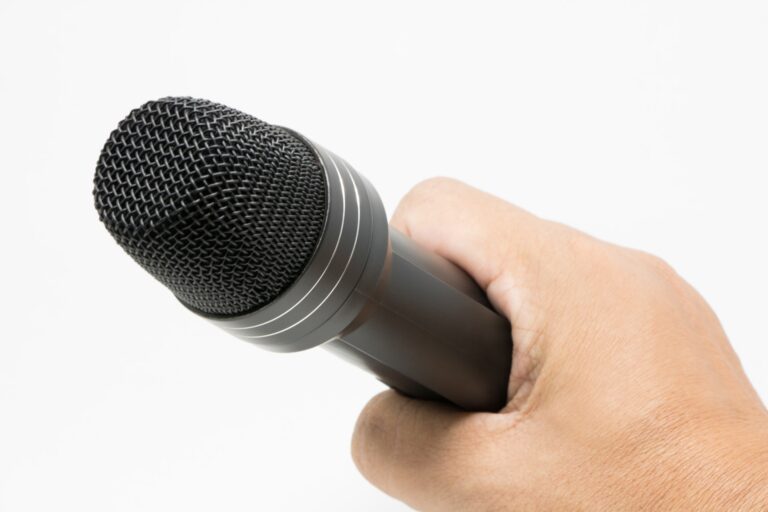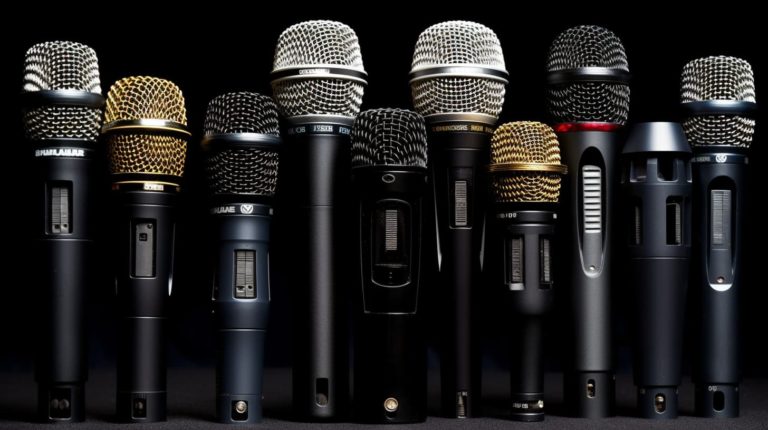Ribbon microphones are a type of microphone that uses a thin, metallic ribbon as a diaphragm. The ribbon is suspended between two magnets and the vibrations of the ribbon are converted into electrical signals.
They are known for their smooth, natural sound and are often used in recording studios for vocals, acoustic instruments, and amplifiers. They are also frequently used in live sound applications for their ability to handle high sound pressure levels. Ribbon microphones are sensitive to wind and can be damaged by strong gusts of wind, so they are often used with a windscreen. They have been around since the early 1920s and were originally used in radio and telephone transmitters. The first ribbon microphones were first co-developed by Drs. Walter H. Schottky and Erwin Gerlach and were known as “velocity” microphones. These microphones are typically more fragile than other types of microphones and need to be handled with care. They are also more sensitive to wind and vibration than other types of microphones, so they are often used in studios where there is very little background noise.
Ribbon microphones are often used for recording vocals, acoustic instruments, and overhead drums. They are also popular for live sound reinforcement because of their high sound pressure level (SPL) capability and natural sound. Ribbon microphones are not as common as they once were, but they are still used by many professional audio engineers.
What is the operating principle of ribbon microphones?
The operating principle of ribbon microphones is that they use a thin ribbon of metal, usually aluminum, suspended between two magnets. When sound waves hit the ribbon, the ribbon vibrates and causes a current to flow in the coil of wire wrapped around the magnets. This current is proportional to the vibration of the ribbon, and can be amplified and used to reproduce sound.
What are ribbon microphones best for?
Ribbon microphones are best for capturing audio with a silky smooth, natural sound. They are quite often used in studios for recordings; because their sound quality is considered to be more accurate and true-to-life than any other comparable types of microphones. Furthermore, ribbon microphones are known to be more resistant to feedback than other types of microphones, making them a superb choice for live performances.
Are ribbon microphones good for vocals?
They are particularly well-suited for capturing vocals, as they tend to produce a very natural sound. They are also typically very rugged and can withstand high levels of sound pressure, making them ideal for live performances.
Do ribbon microphones need phantom power?
Ribbon microphones generally do not require phantom power as they are low impedance and passive. However, there are some active ribbon microphones on the market that require phantom power.
What is the difference between condenser ribbon and dynamic microphones?
The difference between condenser ribbon and dynamic microphones is that condenser microphones are typically more sensitive than dynamic microphones. This means that they can pick up more subtle sounds, such as the sound of a person’s voice. Dynamic microphones are less sensitive than condenser microphones and are better at picking up loud sounds, such as the sound of a rock concert.
Are ribbon microphones fragile?
Ribbon microphones are more fragile than other types of microphones because they have a thin aluminum ribbon that is easily damaged.
Are all ribbon microphones Figure 8?
Ribbon microphones are not all Figure 8. There are many different types and patterns of ribbon microphones, including Figure 8, omnidirectional, and cardioid.
Do ribbon microphones have magnets?
Ribbon microphones do not have magnets. They are typically made with a thin strip of aluminum or other metal that is suspended between two poles of a magnet. The vibration of the metal ribbon produces a signal; that is converted to sound by the microphone.
Are ribbon microphones sensitive?
Ribbon microphones are relatively insensitive, which means that they will need more sound pressure to produce the same electrical output as a condenser microphone. Because of this, they are often used in live sound reinforcement, where their lower sensitivity will help musicians reduce the hateful feedback.
What are the negatives of ribbon microphones?
Ribbon microphones can be quite more delicate than other types of microphones and are susceptible to damage from strong air blasts and rough handling (like mic drops). They are also more expensive than many other types of comparable mics.



